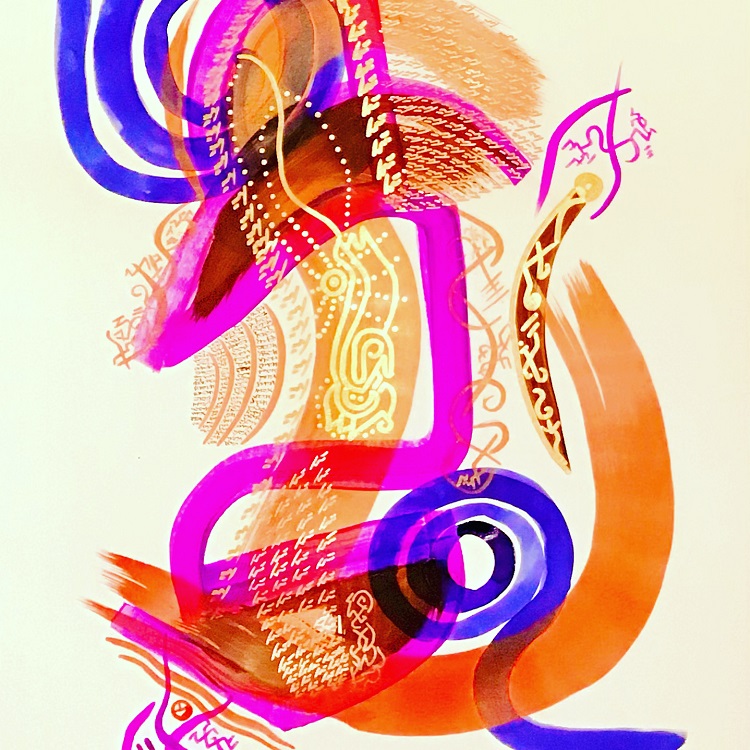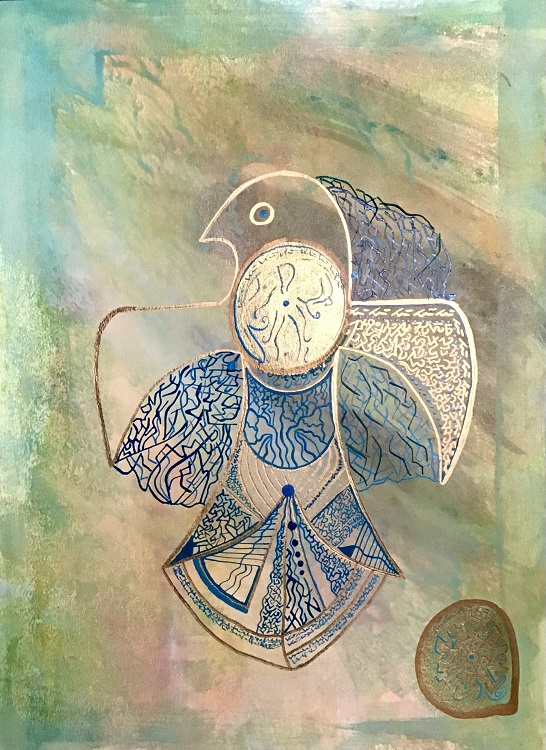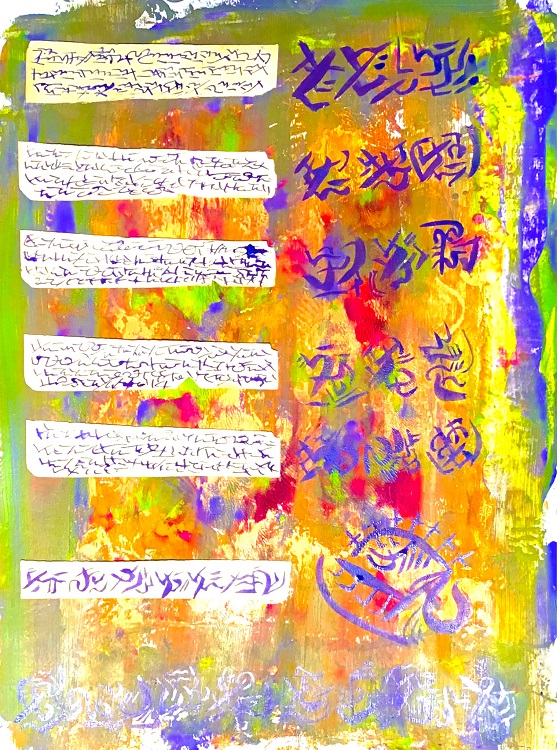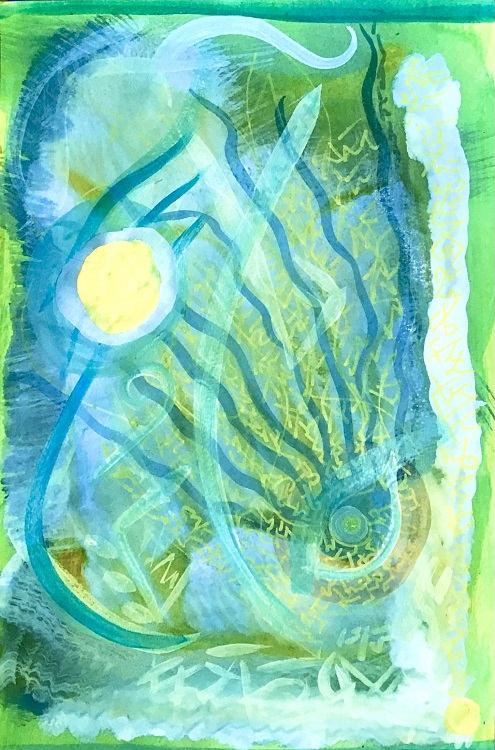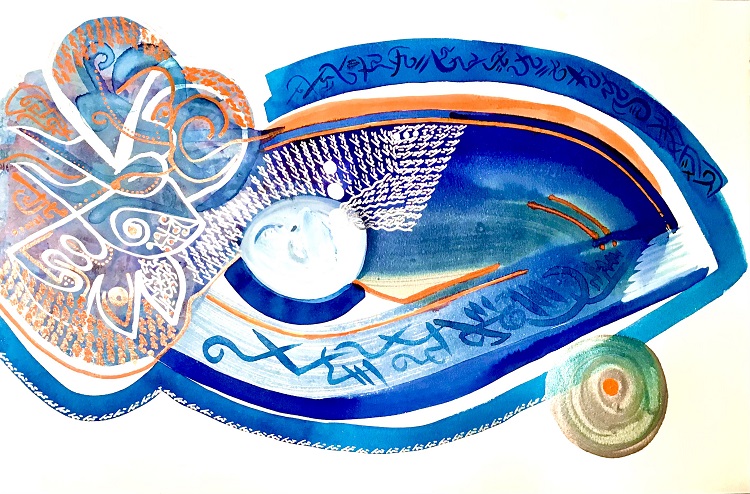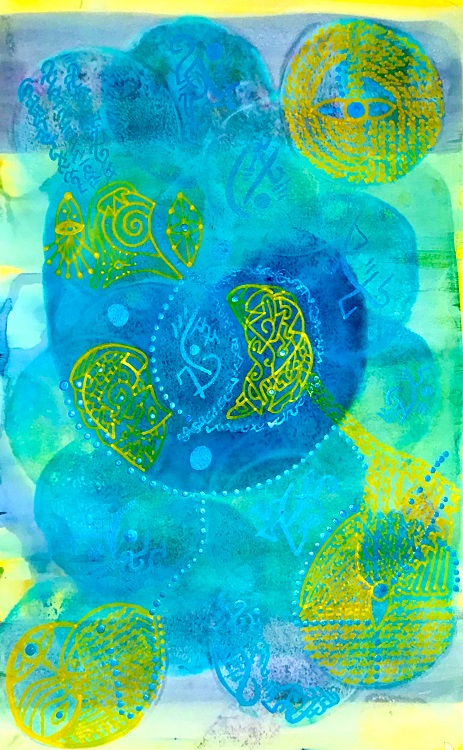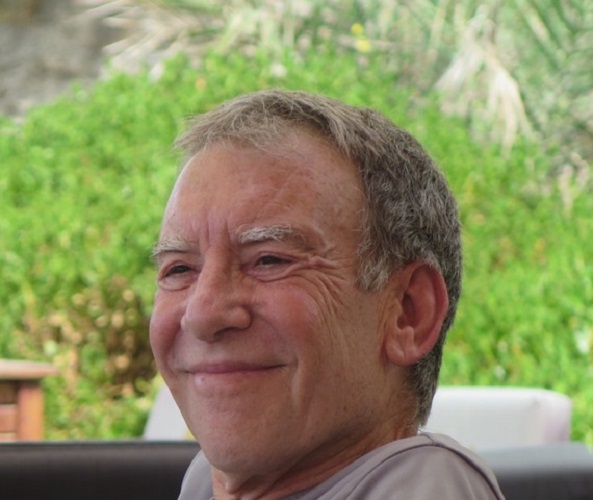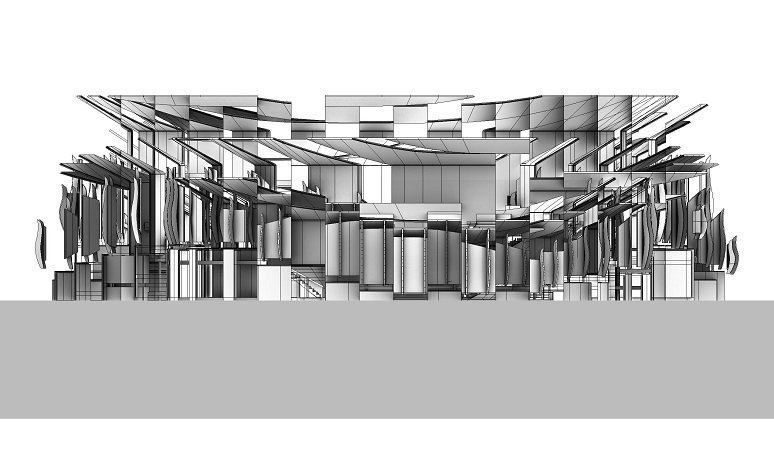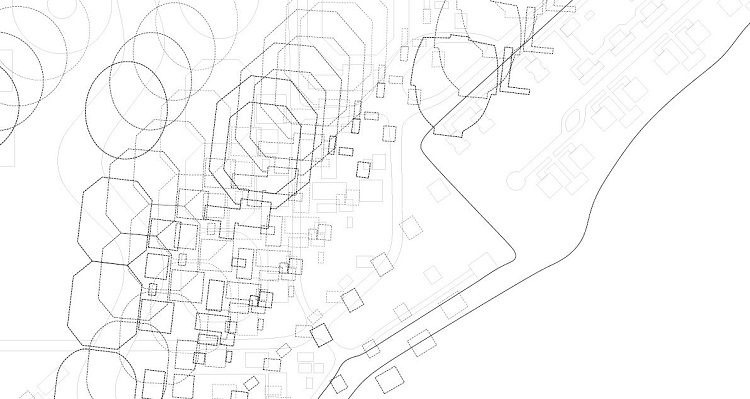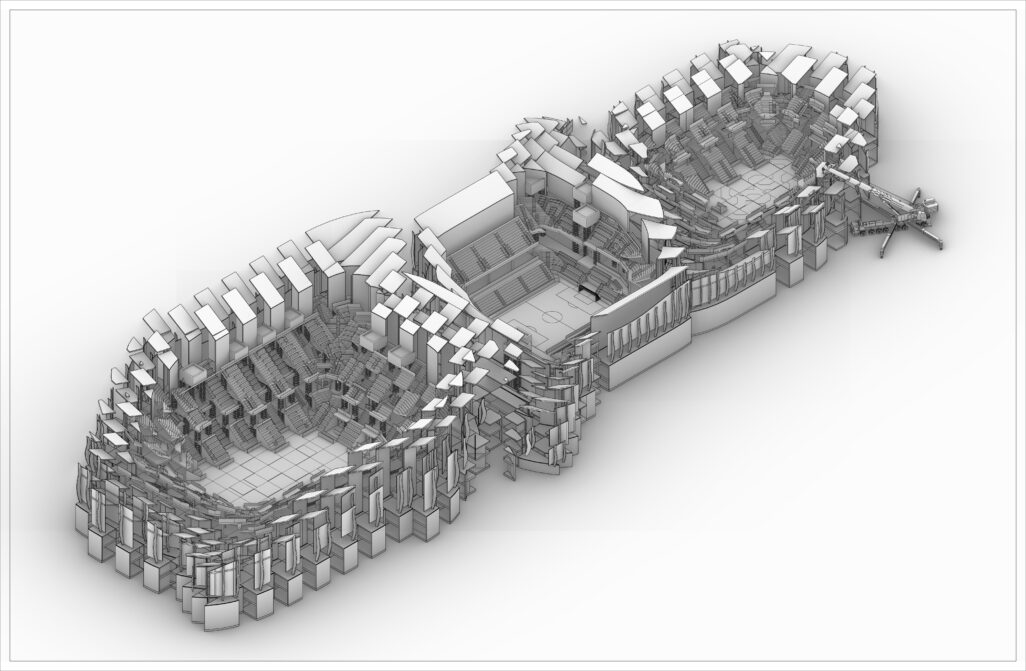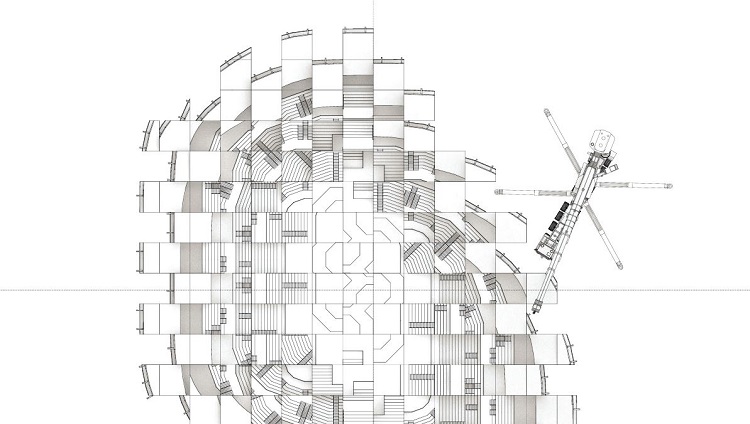4.5: Scant Moments, Heavy Coats | Gordon Hilgers—poetry
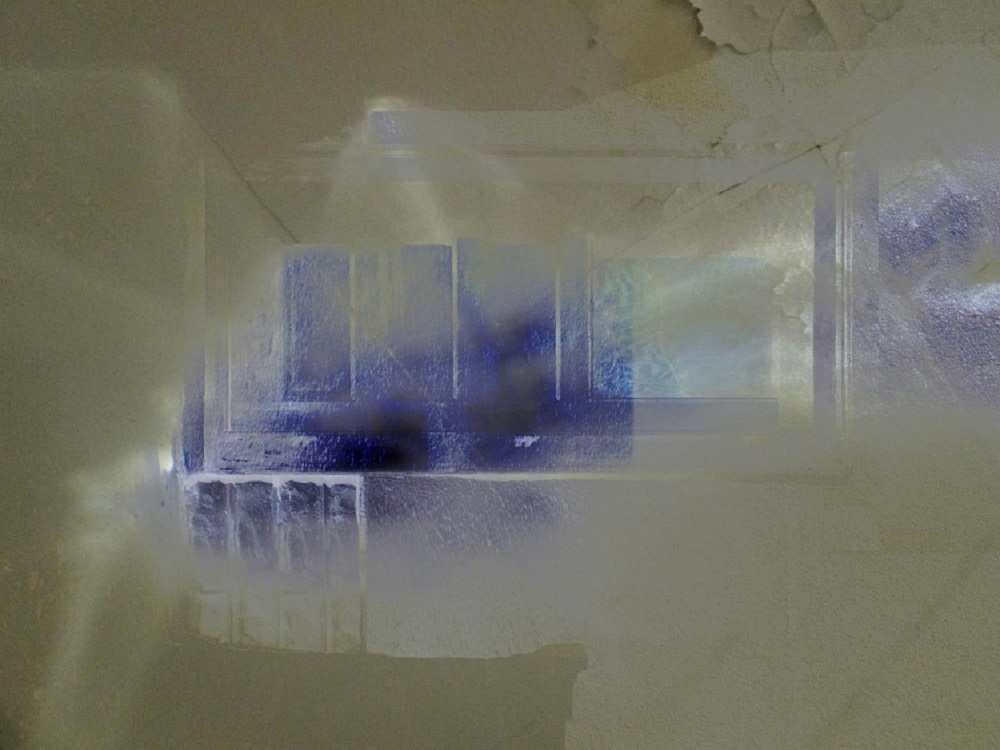
morphograph #8: Instead of Waiting . . .
digital art by Dale Houstman
©2014
new poetry–Gordon Hilgers
ETERNITY BESIDE A DOOR
I think I finally reached the human
inside myself. He was no homunculus,
or simulacrum. But bitter sun-yowling
that echoes inside the uncertainty of
dreams, and deeper cries; primitive
homilies—of utterance, about utterance,
how the first word burbled past the lips,
the fearful lunge beyond loneliness,
a hair-in-the-butter spectacle whereas
where became nowhere, meadowlarks
whistling beyond the windowpane: this
was me. Only for an instant, no lilies,
no blooming, no real sky, a point where
a song squeezes back when you grasp
its hand in the dark, yellowing cotton
adrift in the absurdity of daylight. I am
early morning, I follow footfalls of future,
I knife at the shore like a glint shooting
from a brook, then I go, or went, waking.
THE GOD OF DIRT CLODS
Lividly lost, you lie here
beneath starlight’s lost shimmer,
memories of blistered walls
disrupting your delusions of lucre,
your fiction kindling a laughter
that is unnecessary and black.
Dream of your ashen Avalon now,
all its gray angels barking at the sky,
your own breath hollower
than usual. Who looms over
innocence at the wrong end of day?
Who knows its funny flaws,
its dustpan verbosity, its secrecy
the chambermaids clutch?
You whittle intrigue until razor-thin,
your lust a mountain retreat,
ghost moments everywhere,
no cure for lack as galaxies creak
or shiver, a listless, murderous
whim of reasoning. To dream of it,
heartlessness, mosquito’s reflex,
twitching in bleeding dawn, this life
your alien landing in the peat.
AT THE EVE OF REVOLUTION
Oblivious before the Marxist unknown,
a future-perfect noun gone library-blind as
expectation of the letters will come
amid rumors of rubbish, a jail-cell alive
with endings, water-fountain full of running
small children from the rain because
the myth of the lighthearted is rutted and
raw under the noonday light: Oh, I live
so confused. You do not need to tell me
what I never will know, this endless
trick of all, the most luminescent hour
ever studied, furrowed bandages singing
right where death begins: I start-out
desperate to begin again and condemn
what never was, a saying of solid ground,
ground of being, ground of dream, love.
WAVE-TIP REVERIE
I remember roots
finding water, celebration
out there in the underground
some somnambulists missed
as thorny slivers shipped-
in from Albania, possibly Naxos,
broken berths, harbor locked,
beachside beer-stand neon-lit
and looking for girls.
What repairs are there inside
the uncertain future? Leavening,
ventriloquists vanquish all
the hopeful flowers, out where
the absentee bedside calls
via coincident clues.
Flat faces hint all night, a braille
lividly commercial and on TV,
scratchy beneath hands
smoothed like paved roads
where bumps have fun. This
is the good error, her brevity of
whip-snap sighs, oozy
bits of blink
as ancients chatter into history.
LEFT BEHIND
You’re wandering, lucidly apart from
various dreamlike confusions where sleep
tugs at one stranger’s clothing strangers
might dub a mind, others an animation
or holographic image. Emanating
from your life’s fantasy, you are
the breath of a Chinese dragon,
the creature known as Lung or Long–sign
of good luck, power over rainfall. Groaning
in childbirth, your mother dreamt of you.
Your father tells you her eyes flashed as if
carp, gold flecks lurking in a vexed pond.
Now you simply go. Perhaps some watch;
no matter. Ten thousand miles from home
is but a step in a sky of gloaming grief.
THE CLOCK VERB
A so-called dove with a stick alerted you
deluge or the end was nearing for a black season
which had brimmed an unintentional metaphor
for chalice with a celestial ocean. How the flecked birds
swiftly neared Columbus’ tiny boats, too, that ache
akin to this day,
only warmer, a desert gone to abasement, all this
from a muddy sky of clay. One day, our forsaken worth
will crack apart, first kiss, sudden grief, a saddened wish
unfulfilled, this thingness of myself gone to below
the way bodies fall, an invisible ephemerality brightly
left to dream. Now you lift,
loving blush wind, sails muttering in codes of old linen,
then olive Sargasso fondles greening keel, new nativism,
pressure’s end, an octogenarian child, a shied grasp
feeling from the shallows if the unreal is tactile,
her fingers wet. I took a breath of this, a long whiff
when my life had gone crazy
into the blizzard. Then I began again, as I always have,
as I plant my grapes late and by the stars and moon,
my back to undertaker’s smile at a black road’s dead end.
EDITORIAL COMMENT
Go. Write more mangled approximations
as if to immortalize how the ancient madnesses
sought to tunnel into what breaks the heart open
into goodness or mooniness. Tonight is a sight
of shepherds scanning the sky in a search
for higher treasures
or of a barroom Romeo searching for the right glint
in a sleepy girl’s eyes. Pyrite mistakes itself
for gold, and uncultured accommodations of Sartre
or Camus rock, each part of the desire trip. Love is
now a gangland protection racket, how Crips dub
their dope murder a cap when reason must
be destroyed,
where a life is the stone that finally fills the sea.
SACRED BOOK
Out here in the whitened barrens,
you seek to reinterpret eccentricity with sand,
which isn’t easy. It’s the way we all
sleep in our shadows, or how we do not know
whether anything means more than
the one crowded dream we remember best.
I’ve never reached the Barrens here,
at least not in my sleep. I met a sassy beauty
with black hair, and people I don’t know
kept telling her, Do not trust him! because this
is how revolutions are supposed to be
a stammer into starting like locomotives lost
in the cold. I met one stranger, said,
This is reality, that is civilization, and this is
the people’s will, and over here it’s
merely me and the girl. I held-down the room
for nearly an hour. Then the cops came
to arrest everyone but us. Beyond a circle
resides more circles, and then the Barrens,
which watches us always from far places,
quick to kiss suddenness, everyplace
a grim new adventure, small days we learn
each unsure step deeper into infinity.
TELL ME
What proof would lie in night’s remains?
This thing, awakened by insistence-as-being:
What is a discovery that all has been forgotten?
Nightfall, typically becoming in red roses
where darkness rises in the east–this mystified
tendency to name it birth–belongs to no one,
even if the man downstairs turns-up his hip-hop
as if he’s waiting too, or if the dove sees
exactly what a coo might mean.
Tell me why there are moments when sleep
brands me with embers, when emptiness is my
final recourse–as if the future is shipwrecked,
the sea presently bloody yet implacably peaceful.
Say to me, There is light in being buried alone,
as if the angels can sleep through insomnia, as if
airport gates mysteriously open,
or as if no one could dare to own an empty life.
I’ve worked around the nonexistent clock, have
danced to broken radios, have deafened
all I could speak beyond grasping, Nothingness
unwilling to hear. Sometimes, unpleasant pain is
the pleasant gift because nobody comprehends
because unseen faces enthrall entire worlds–
those that insist on belonging.
I admit it. I am part of some vast loneliness,
all the foregone galaxies, way out there beyond
the speed of light, persisting as ghosts because
their light is homeless after they’ve gone dark.
Any lunatic can bear this moonlike honesty
like teeth,
and no one says anything, especially not me.
all poetry ©2021
mission statement (poetics):
I’m not one for missions. Paging through recent editions of The Best American Poetry, I discovered I’m apparently not marching in step with those who advocate poetry as a device bent toward social commentary. But then I’ve never had much for what I call the Poetry Billboard 100. That’s not to claim I’m not interested in poetry’s role in effecting social change. I am confronted with the world, and with its sometimes-antithetical human concoction of a world, daily. I often end confused by both, especially by how their collisions shoot out sparks. That’s where I begin: right in the middle of the confabulating and mystification. Sure. I could go with this: “This poem is thinking of ‘creating’ itself (pome) as manifested as a Chinese Pidgin English translation from an American English translation from the Malay, and that from Pashto by way of a number of ancient French translations of a compendium of ‘monad theories of ontological hypotheses’ shoved through a bowdlerized ideation of Derrida’s theories of deconstructionism about some bird I saw that almost got hit by a transit bus this morning at around 10:37 a.m. CST. The versification will be 99 percent Google translator and less than .0001 percent imagination, the rest of the 100 percent pure energy dominated by keyboard strokes,” but why bother?
This is why I am sometimes vilified.
I want poetry that plays as it demystifies, poetry that releases me from the 21st-century’s spellbound infatuation with factual information. After all, if I wanted to be a newspaper columnist, I’d have dwelt on punditry. Is it irritating when someone extols an op-ed familiar as “a poet”? If not, perhaps it should.
biographical note:
Gordon Hilgers has published in Cimarron Review, Red Savina Review, Sequestrum, Chiron Review, and elsewhere. He has a degree in news writing. Go figure.

